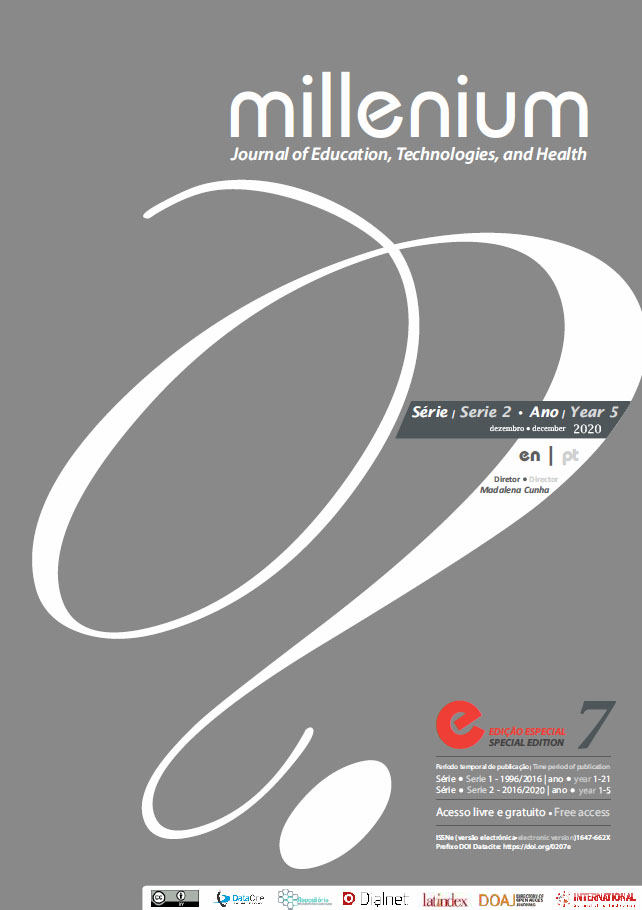Emergency department deaths
knowing better to better respond
DOI:
https://doi.org/10.29352/mill0207e.06.00367Keywords:
emergency service hospital, underlying cause of death, pathological conditions, signs and symptomsAbstract
Introduction: The aim of the emergency service is the reception, diagnosis and treatment of patients who have suffered accidents or sudden illness and who need rapid care. Reducing the mortality rate in the emergency services is a priority of enormous importance for the National Health Service.
Objetives: To describe the clinical characteristics of people who die in the emergency service.
Methods: Descriptive, qualitative and retrospective cohort study. The sample included people who died in the emergency service of a hospital in central Portugal during the year 2017.
Results: The study sample included 250 people, of whom 114 were male and 136 female. The minimum age of admission to the emergency room was 27 years and the maximum age 101 years. The most commonly used flow chart for Manchester Triage System was for dyspnea (46.8%), the very urgent priority was 46.2% and the emerging priority 41.4%. The variables age, time elapsed from admission to screening, time elapsed between screening and the first medical evaluation, systolic blood pressure, Glasgow reactivity index, heart rate and body temperature were important in predicting deaths.
Conclusion: Knowledge of the mortality rate in the emergency services, and of the respective variables influencing it, makes it possible to reorganise all intrinsic dynamics and thus improve existing structures for a more efficient response.
Downloads
References
Administração Central do Sistema de Saúde. (2015). Recomendações Técnicas para Serviços de Urgências RT 11/2015. UIE/ACSS.
Alves, Á. T. L. S., & Faro, A. (2016). Perfil epidemiológico da mortalidade em um hospital de urgência em Sergipe Epidemiological profile of mortality in a hospital of urgency in Sergipe. Journal of Health & Biological Sciences, 4(2), 95-101.
Batista, T. M. (2012). A Morte Inesperada no Serviço de Urgência: Um Olhar ao Vivido pelos Enfermeiros. Escola Superior de Enfermagem de Coimbra. Coimbra.
Benedetti, G. M. dos S., Oliveira, K. de, Oliveira. (2013). Significado do processo morte/morrer para os acadêmicos ingressantes no curso de enfermagem. Revista Gaúcha de Enfermagem, pp. 34(1), 173-179. https://doi.org/10.1590/s1983-14472013000100022.
Bíscaro Valera, R., & Turrini, R. N. T. (s.d.). Fatores relacionados à readmissão de pacientes em serviços hospitalar de emergência. Ciencia y Enfermeria, pp. 14(2), 87-95.
Direção-Geral da Saúde. (2015). Plano Nacional de Saúde - Revisão e Extensão a 2020. Ministério da Saúde Saúde.
Direção-Geral da Saúde. (2018). Norma 002/2018 Sistemas de Triagem de Serviços urgência. Norma Nº 002/2018 de 09/01/2018, Direção-Geral da Saúde, 1–23.
Guedes, H. M., Souza, K. M., Lima, P. de O., Marti. (2015). Relação entre queixas apresentadas por pacientes na Urgência e o desfecho final. Revista Latino-Americana de Enfermagem, pp. 23(4), 578-594. https://doi.org/10.1590/0104-1169.0227.2592.
Medeiros, K. S., Costa, E. S. & Oliveira, M. R. (2019). Morte: O Processo Do Luto. Psicologia.Pt, pp. 1-10.
Ministério da Saúde. (2014). Despacho nº 10319/2014. (2014). São definidas a estrutura física, logística e de recursos humanos dos Serviços de Urgência. Diário da República, 2ª Série – nº 153 (11-08-2014), 8174–8175.
Moreira, C. (2010). Avaliação de um implementação do Sistema de Triagem de Manchester: Que realidade? Universidade do Porto, p. 78.
Mota, M., Cunha, M., Santos, M. R., Silva, D., & S. (2019). Non-pharmacological interventions for painin adult victims of trauma: A scoping review protocol. JBI Databese og Systematic Reviews and Implementation Reports, pp. 17(12), 2483-2490. https://doi.org/10.11124/JBISRIR-2017-004036.
Oliveira, G., Vancini-Campanharo, C., Teixeira Lopes, M., Barbosa, D., Okuno, M., & Batista, R. (2016). Correlação das categorias de classificação de risco com aspetos clínicos e desfechos. Revista Latino-Americana de Enfermagem, p. 24. https://doi.org/10.1590/1518-8345.1284.2842.
Reis, É. (2017). Cuidar da pessoa em situação critíca: Do serviço de urgência à unidade de cuidados intensivos coronários. Escola Superior de Enfermagem de S.José de Cluny.
Renda, T., Corrado, A., Iskandar, G., Peleia, G., Abdalla, K., & Navalesi, P. (2016). Correlação das categorias de classificação de risco com aspectos clínicos e desfechos. Revista Latino-Americana de Enfermagem, p. 24. https://doi.org/10.1016/j.bja.2017.11.010.
Vasconcelos Coimbra, B., Campos Garcia, C., & de Rezende Bessa Guerra, T. (2018). Perfil de causa mortis em idosos interndaods em um serviço público de urgência e emergência: evidências clínicas. Academus Revista Científica Da Saúde, pp. 3(2), 29-35. https://doi.org/10.24118/reva1806.9495.3.2.2018.438.
Downloads
Published
How to Cite
Issue
Section
License
Copyright (c) 2020 Millenium - Journal of Education, Technologies, and Health

This work is licensed under a Creative Commons Attribution 4.0 International License.
Authors who submit proposals for this journal agree to the following terms:
a) Articles are published under the Licença Creative Commons (CC BY 4.0), in full open-access, without any cost or fees of any kind to the author or the reader;
b) The authors retain copyright and grant the journal right of first publication, allowing the free sharing of work, provided it is correctly attributed the authorship and initial publication in this journal;
c) The authors are permitted to take on additional contracts separately for non-exclusive distribution of the version of the work published in this journal (eg, post it to an institutional repository or as a book), with an acknowledgment of its initial publication in this journal;
d) Authors are permitted and encouraged to publish and distribute their work online (eg, in institutional repositories or on their website) as it can lead to productive exchanges, as well as increase the impact and citation of published work
Documents required for submission
Article template (Editable format)





